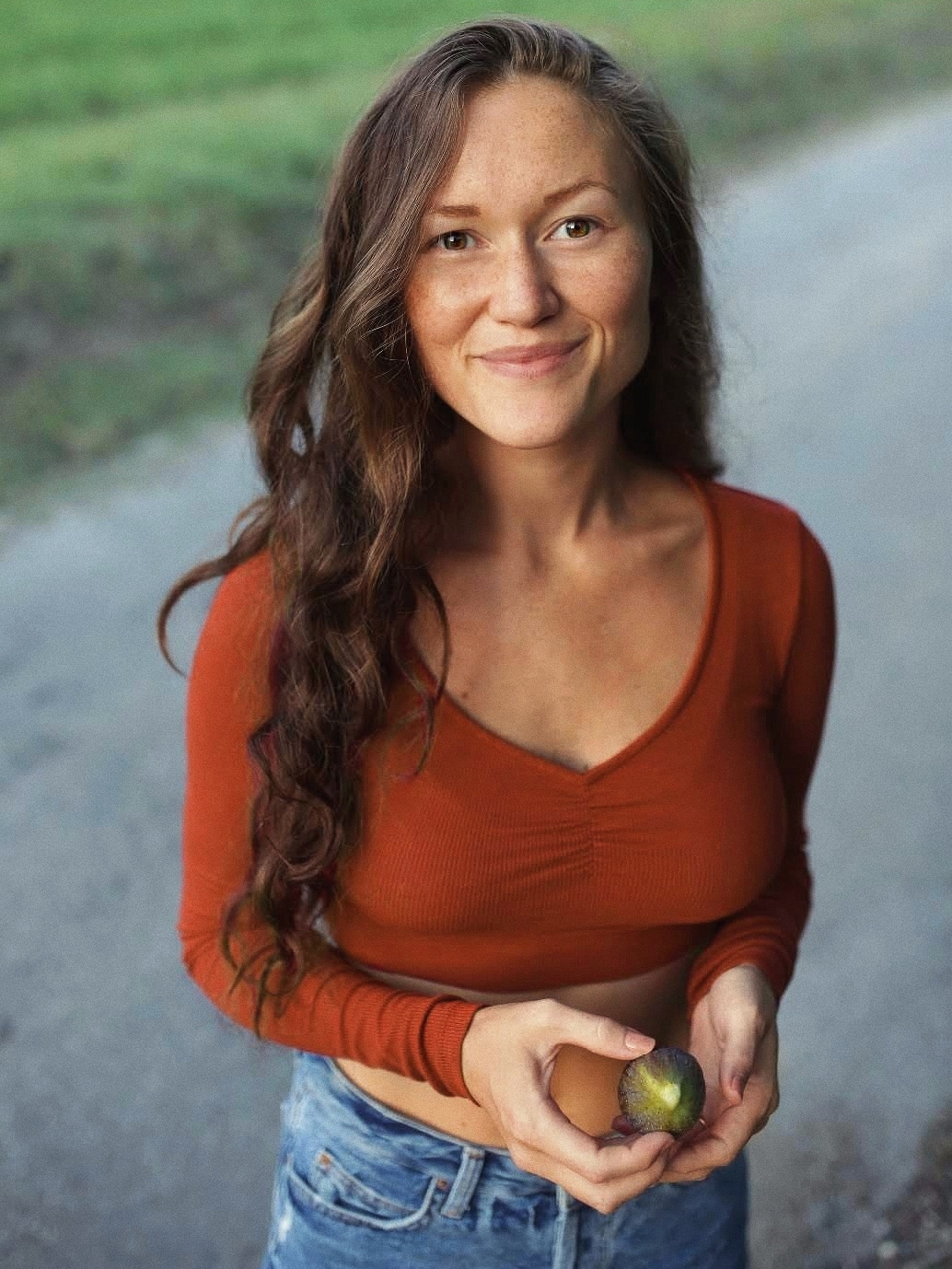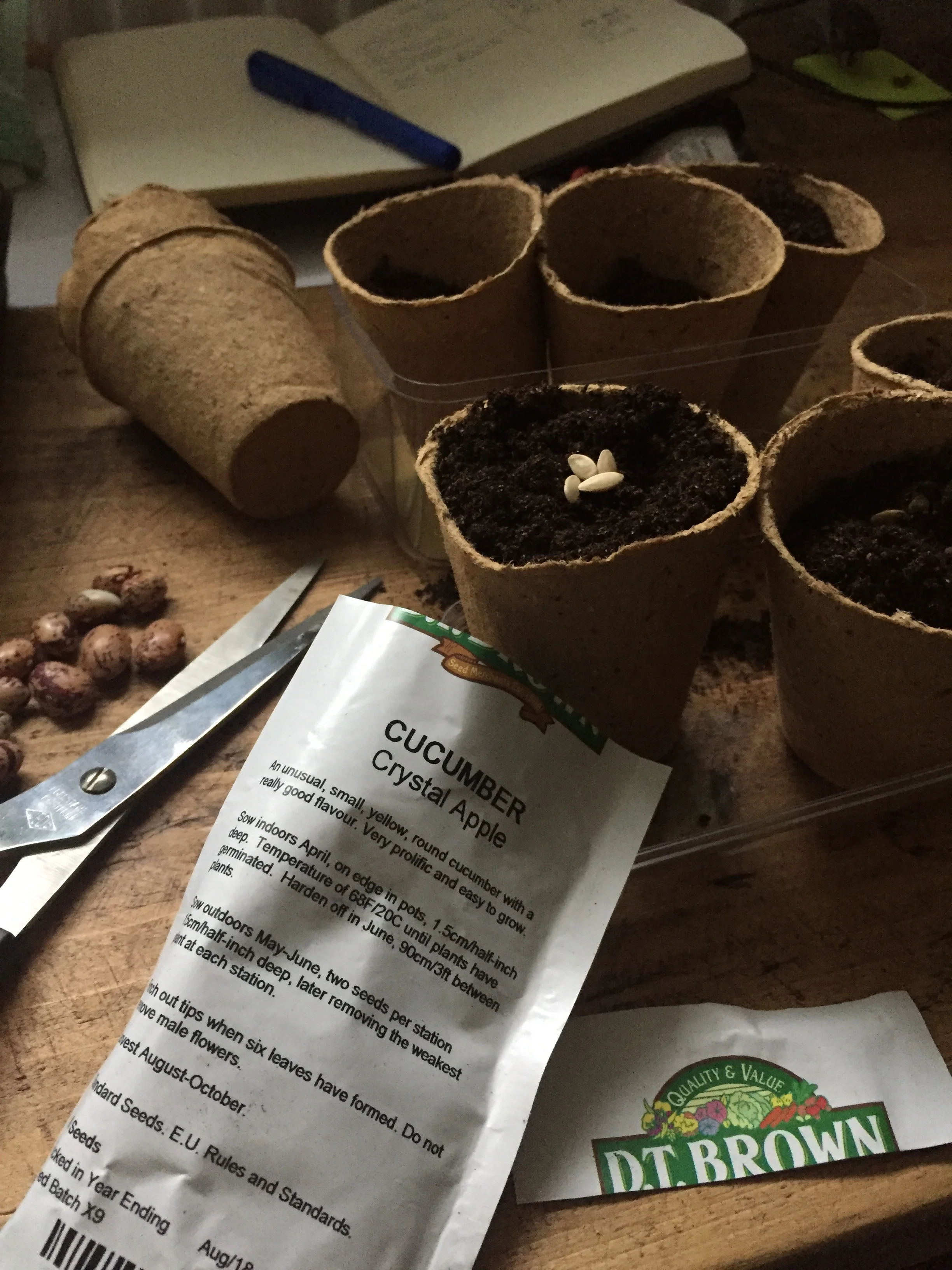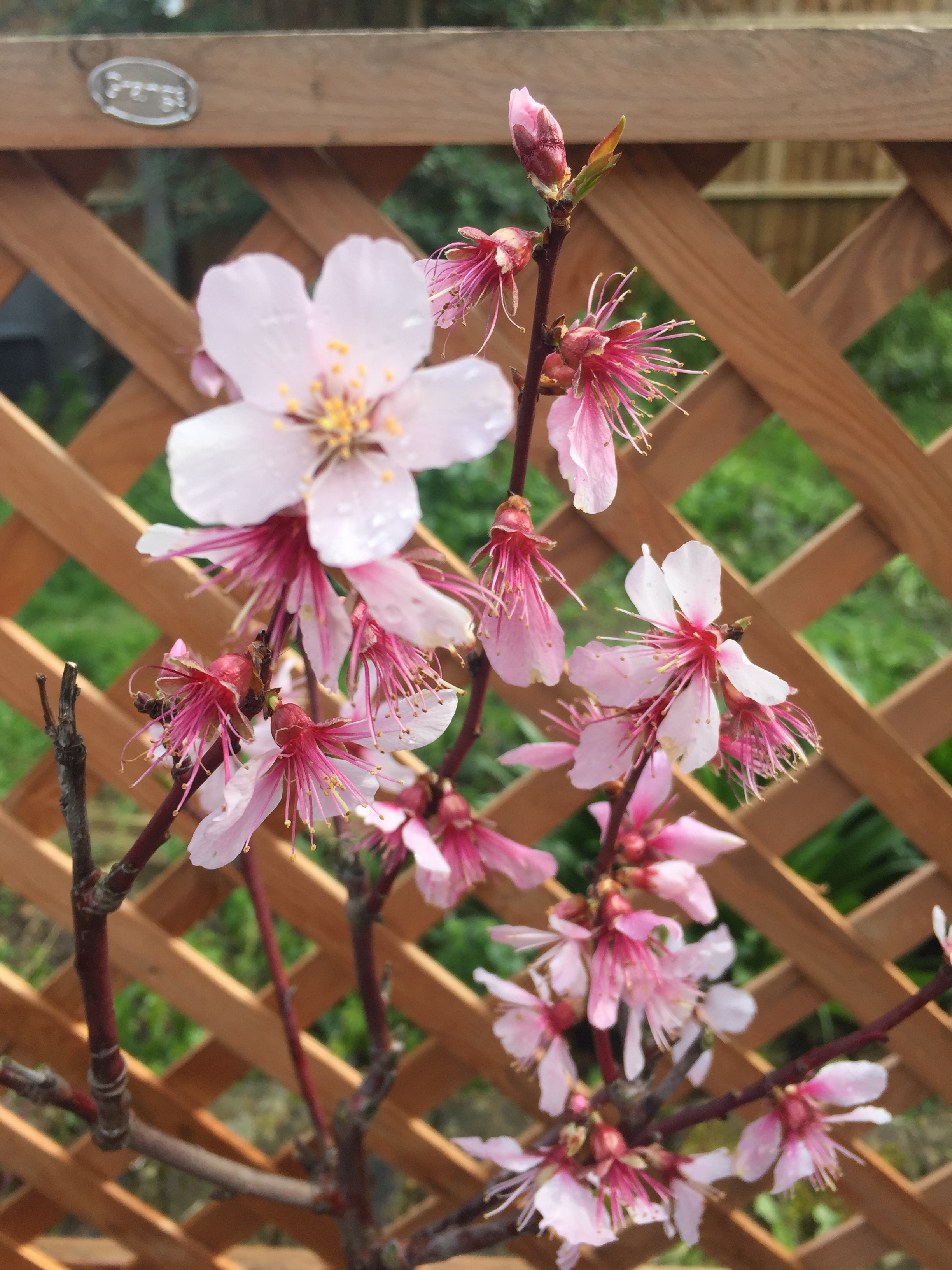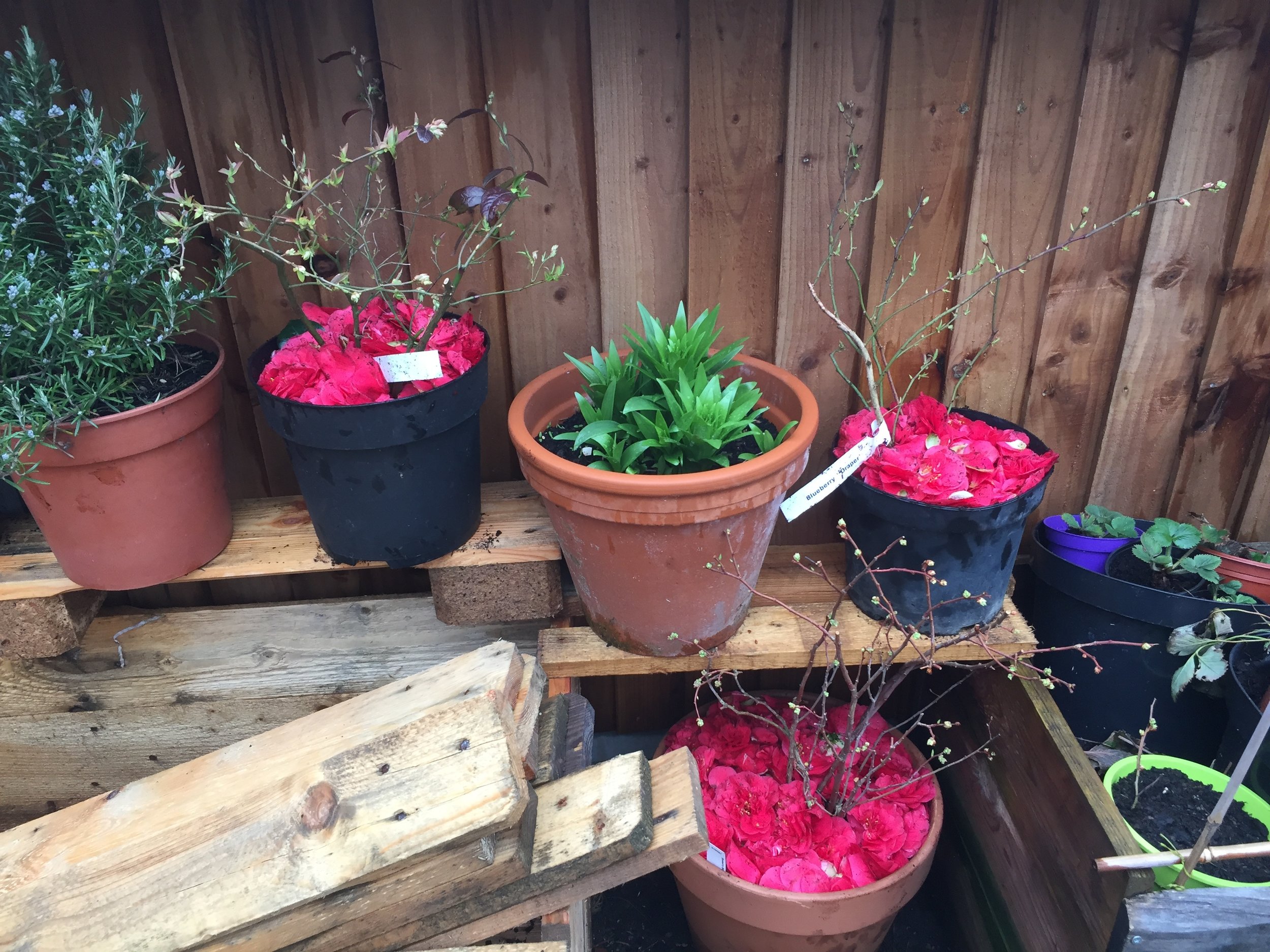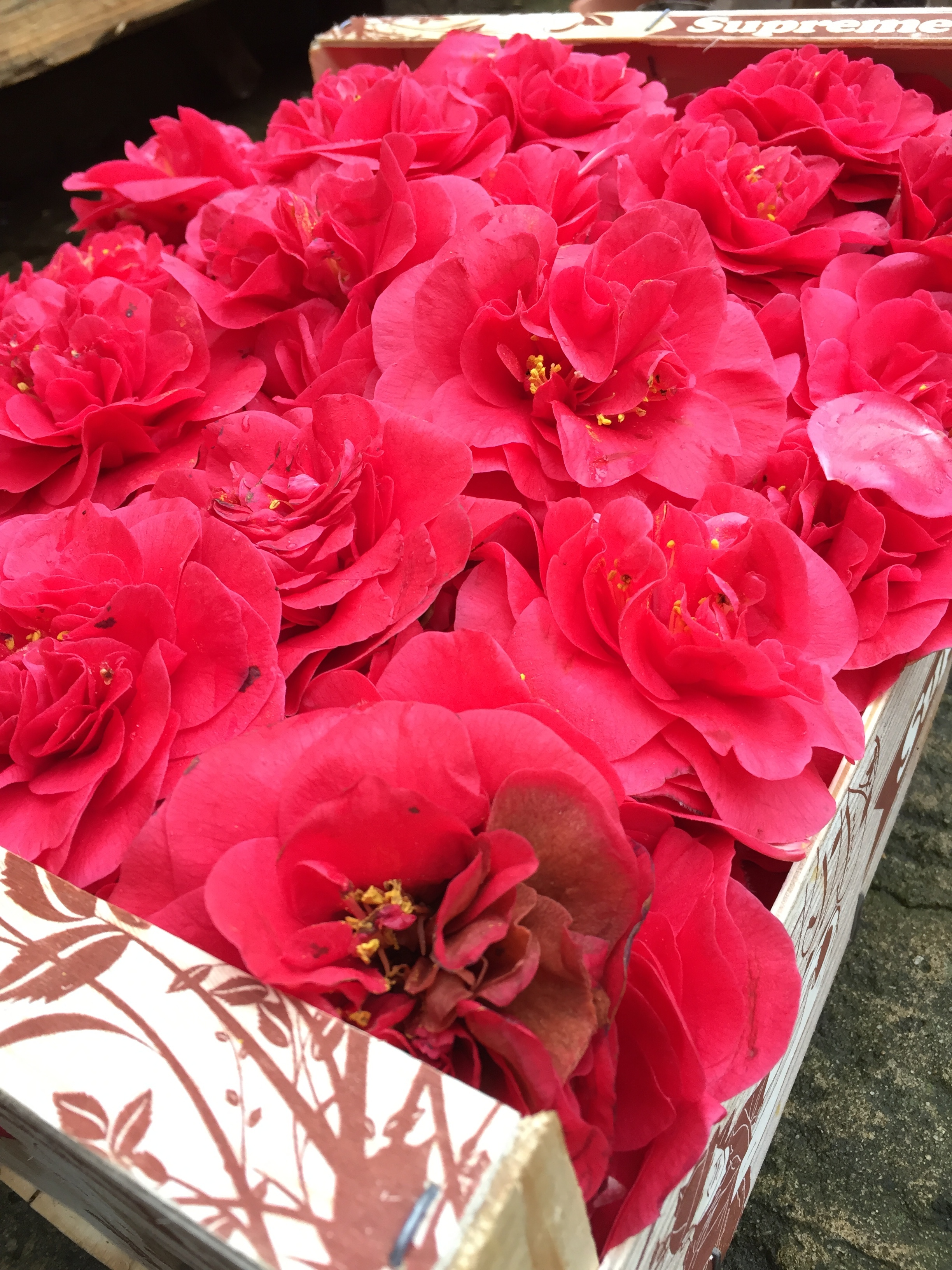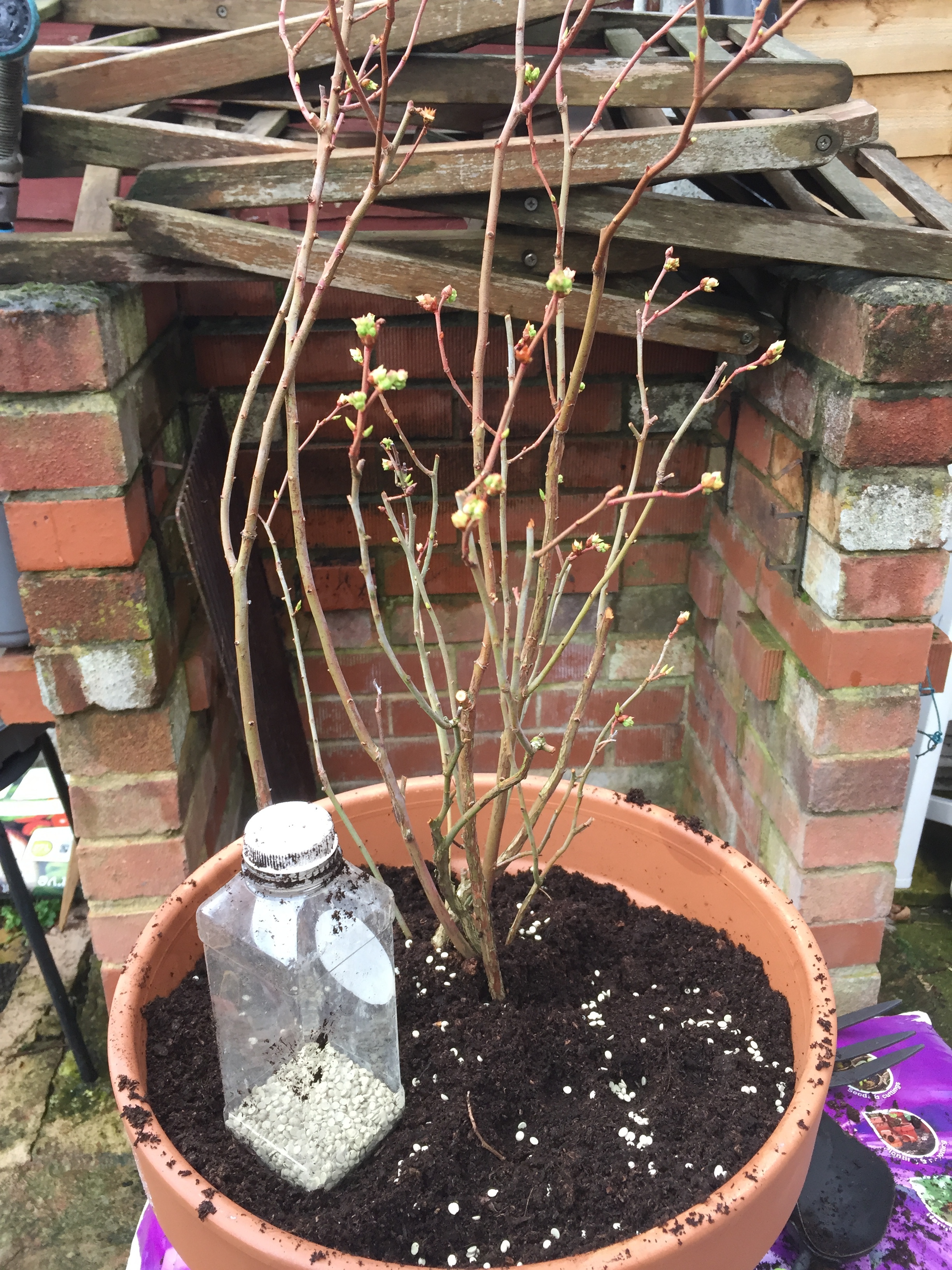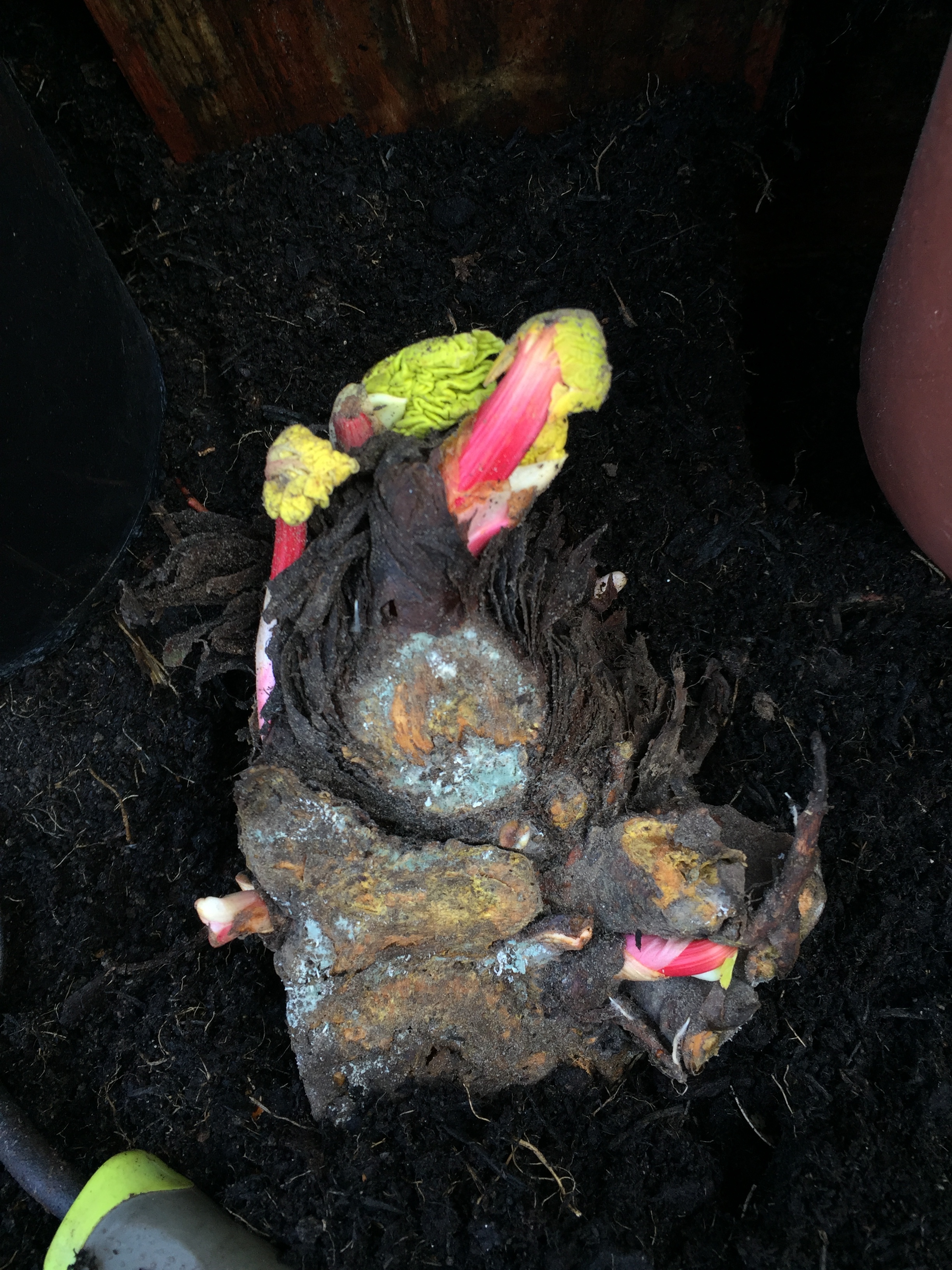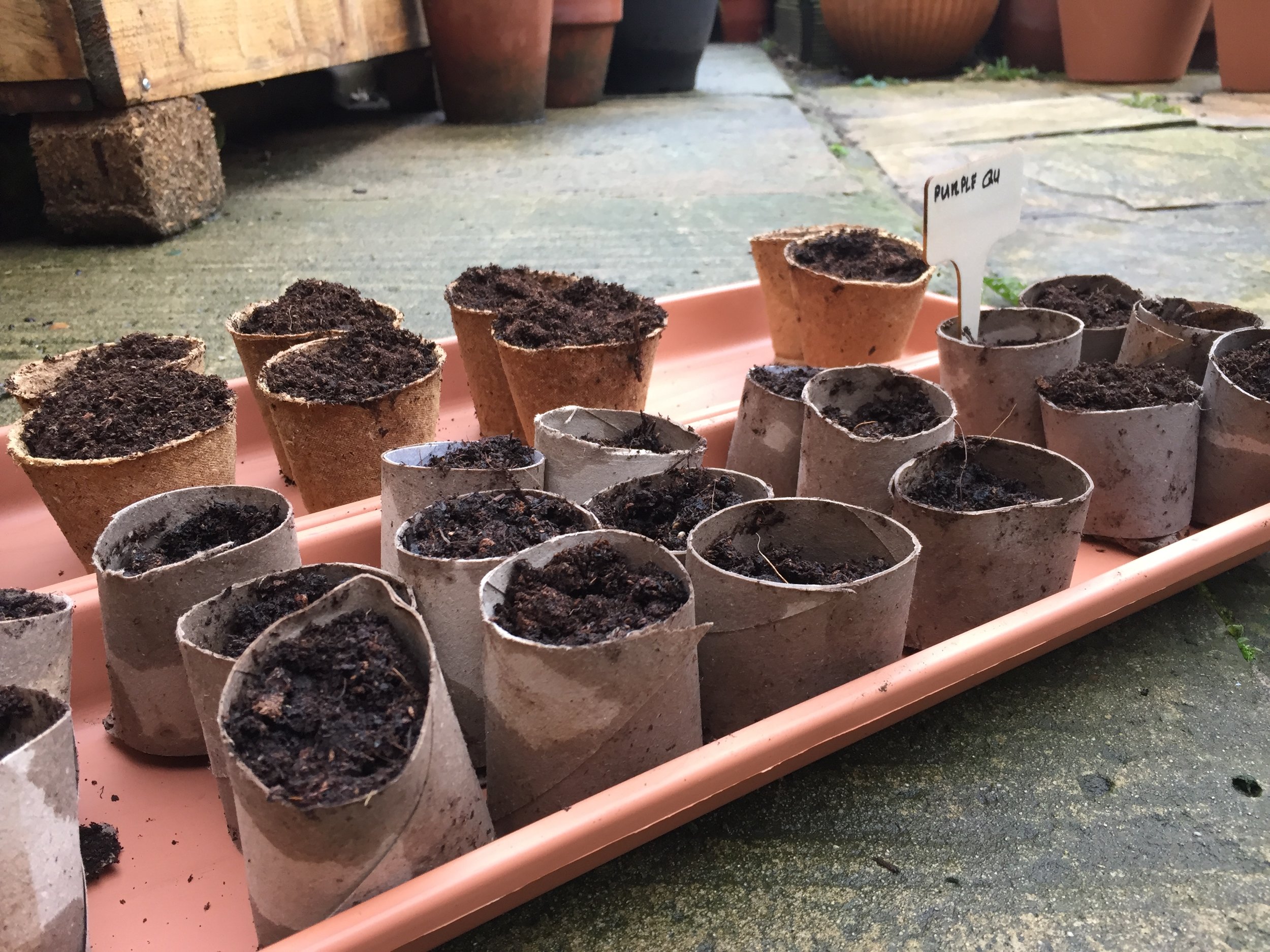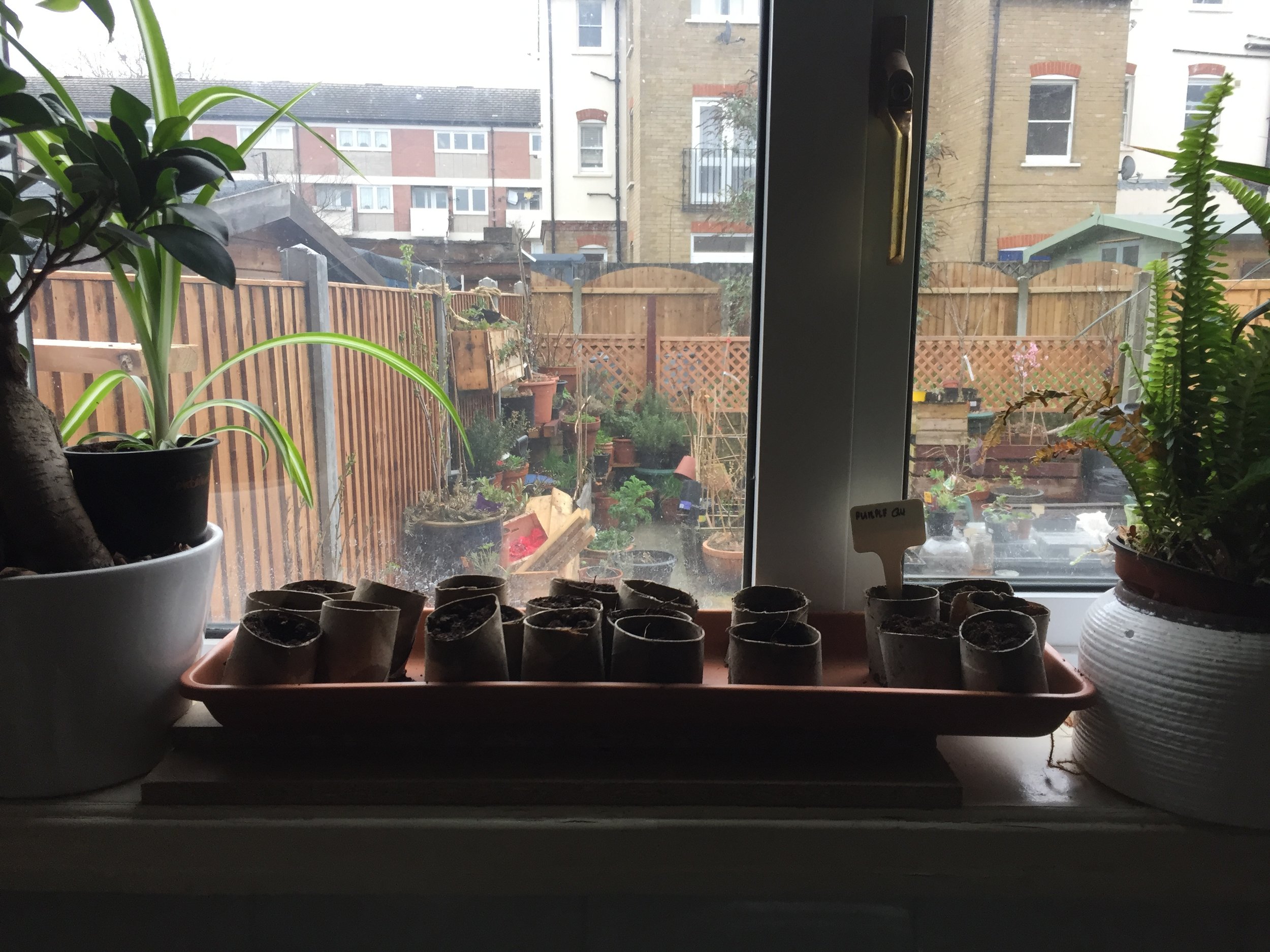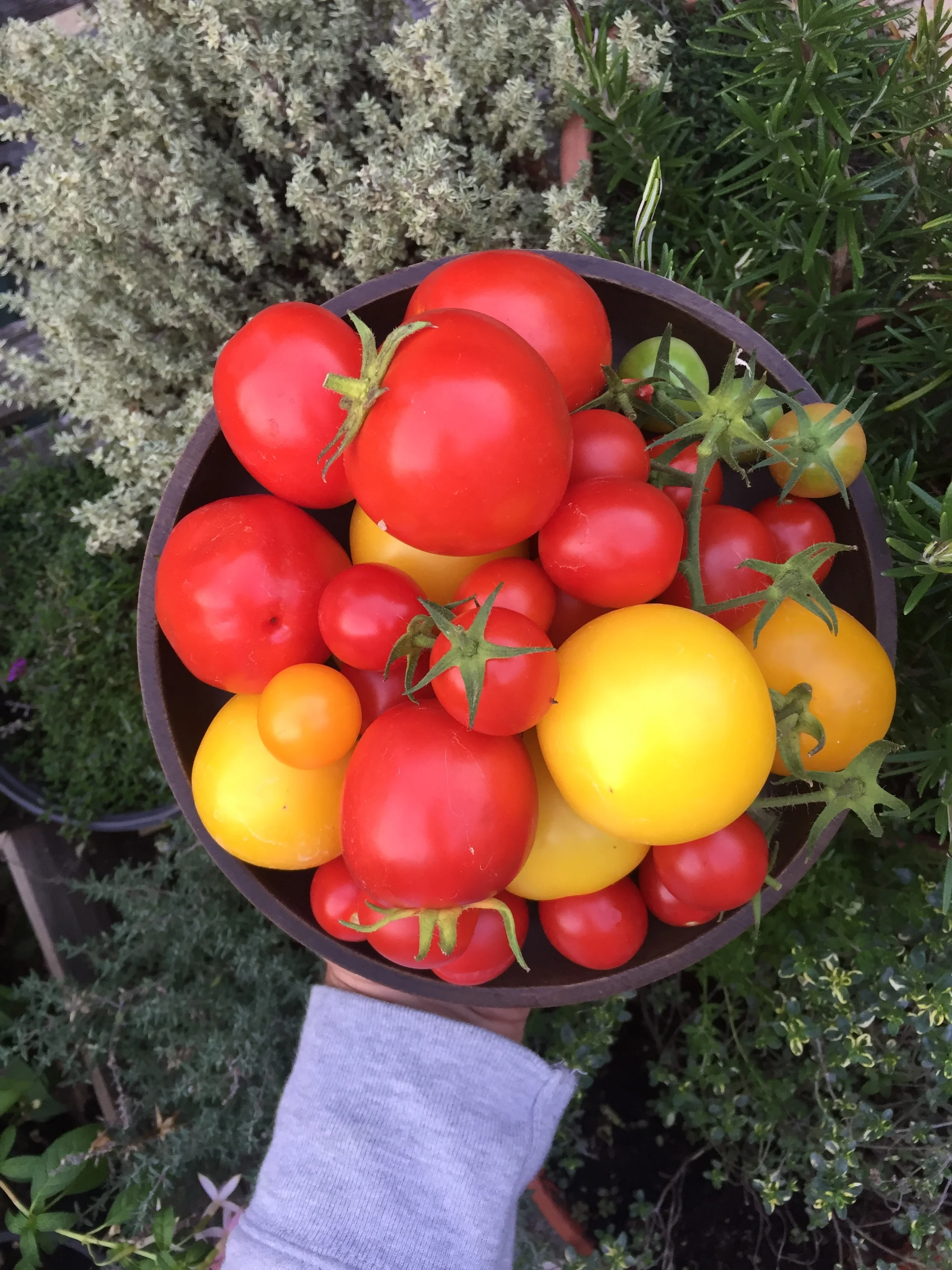Urban Vegetable Gardening: Sowing Seeds (April)
April 2018: The collection of fruit, veg and flowers is starting to build!
April is here and we're starting to spend more time working on the garden. It's warming up ever so slightly and, with the temperature increase, lots of dormant plants are starting to come back to life. The rhubarb we originally thought was dead has made a healthy comeback and all of our trees have started to flower - something they didn't do last year!
The challenge is to grow enough fruit and veg to rely only on the garden - for three continuous weeks. We want to build a vegetable and fruit garden that will supply all of our fruit and veg, or as close as possible, for three weeks - from fruits to greens, herbs and edible flowers. The plan is to have no need for any store- or market-bought vegetables or fruit. This blog series will detail each month's activities in the hope that we can encourage you to start growing your own food at home, no matter how small the space.
It's a big ask and a big challenge for a small urban garden that doesn't a huge amount of direct sunlight - but we're confident we can give it a go. Our focus for this month has been to sow seeds and set our planters (built last month) in their final positions.
The space
We've used up most of the wood we salvaged to build planters around the border of the garden.
Fruit blossom
A few months ago, we put all of our trees at the back of the garden. They're patio varieties so they were small enough to put on on a robust shelf in the area that receives a good amount of light. Last year, when we bought most of the trees - cherry & plum - we didn't get any fruit and, as you can imagine, we didn't see any blossoms in the spring. This year it's quite different and as the photos above show, our almond and plum trees are in blossom. (Left to right - almond, plum, plum). The flower blossoms are usually the first things to form after the dormant phase over winter and have a more round shape versus the leaves which look 'sharper', almost like mini thorns. It was a good way to help gauge or guess whether we'd get any flowers this year. Not all flowers will turn into fruit but generally speaking the more flowers the more fruit one can expect. We aren't getting our hopes up - especially with the mini almond tree - but there's a chance we might get some plums and cherries this year!
Blueberry mulch - boring but helpful!
I'm sure the thought of having a conversation about 'mulch' can sound so boring - but hear us out on this! Blueberries are probably our favourite crop in our small urban veggie garden and we have lots of varieties which crop between June and August, allowing us a full summer of harvesting blueberries. We love using them in our oats or home-made granola in the morning. Some people say growing blueberries can be tricky - but we haven't experienced this. It is said they're fussy because (1) they like acidic (ericaceous) soil, and (2) they like rain water rather than tap water. So, if you don't have the right conditions, it might be hard to get a full crop from the blueberries. But we've found a handy (and free) tip that helps both of these points to work in our favour.
We have a large camellia bush in our front garden, which grows in acidic soil - and ours just so happens to be rather unruly. Last year we collected lots of spring-flowering flowers and used them to cover the soil in the blueberry. A thick layer of flowers will allow the plant to hold rain water and not lose it through evaporation when it's warm, sunny or hot. Once the petals break down, they'll also add nutrients back to the soil - or so we suspect. It's a great, free way to make sure your acid-loving fruit bushes stay healthy throughout the spring and summer. We tried something similar with our Christmas tree but we've seen that the petal method holds water a lot better as it covers almost 100% of the soil's surface area - perfect for retaining the moisture.
For good measure, we also add in sulphur chips to reduce the alkalinity of the soil. These can be seen below. No chips? No problem. Keep up with the pine and camellia flower mulch and we're sure you'll have a bumper crop of blueberries this summer!
Top row, left to right - Camellia flowers, 1/5 of the plant's flowers. Sulphur chips sprinkled in the compost. Sulphur chips close up.
Bottom row, left to right - Blueberry plant. Blueberry plant. Blueberry plants with pine mulch and camellia flower mulch.
Rhubarb - back from the dead
Finally, this month we've seen our rhubarb has come back to life! It might sound like a rookie error but we were certain our rhubarb from last year was dead. As you can see below, it's popped up vigorous as ever. To counter the faux-death, we ordered new plants from D.T Brown which, while they might look smaller than our existing one (they're in the small pots), still have a great root system. We've been told to not harvest rhubarb the first year, so this year with two new plants we'll let one crop and die and harvest the other - we'll keep you updated on this. Rhubarb is a great plant for semi-shade, so a garden like ours is perfect. The large heavy leaves absorb the light and they're pretty tolerant of light levels - at least from what we've seen.
We make a mean vegan rhubarb crumble - we'll post the recipe later on in the summer!
Costs this month
Money
£6 - x3 seed trays from any DIY store or garden store.
Time
2 hours building four large recycled pallet-wood planters.
30 minutes sowing seeds into containers.
30 minutes repositioning pots and containers around to get the most sunlight.
The plants - new plants & updates
Below is a list of vegetables that we have planted or sown this month.
Carrots - We have sowed a huge bunch of seeds, maybe around 300-400. This seems like a lot, but we have mixed varieties of red, orange, purple and yellow carrots.
Cucumber - We've sown crystal apple cucumbers indoors along with our heirloom variety which cropped last year in our garden really well!
Tomatoes - I'd love to list the varieties, but we've sown so many I can't remember! From small cherry tomatoes, to yellow tomatoes. We're excited for these as we'll certainly use them throughout the summer
Globe Artichoke - We've opted to try some artichokes this year. A new experience for us!
Lettuce - We've put a variety of greens together for one of our newly built, semi-shade beds.
Beans - Our favourite, purple queen, along with more broad beans and regular French beans.
Lots of veggies have been sown this month and we're really excited to see how they do. Naturally, as we're experimenting, some things won't work; some seeds won't germinate and some seedlings won't survive - but this blog series is an experiment for us and we're really looking forward to seeing how everything goes.
Below is a list of fruits that are currently in the garden, ready to start growing in the spring. We will add to this list as the growing season progresses.
Raspberries - Regular, Golden
Plum tree - (flowering)
Cherry tree - (flowering)
Blueberries - Dixi, Legacy, Draper, Ozarkblue, Earliblue, Bluecrop
Redcurrants
Blackcurrants
Goji berry shrub
Strawberries
Figs - Panachee & Brown Turkey
Almond - Dwarf - (flowering)
Peach - Dwarf, great for patios - (flowering)
Red grape vine
Gooseberry - Red, White
Rhubarb
What we need to do - April
Sow seeds. Not much to do this month other than making sure our seeds are in place. April is the month for sowing vegetables indoors - we've been trying to do as much as we can with limited windowsill space. April and May are great times to be thinking about what you can do indoors before moving seedlings outside where it won't be as warm.
Miscellaneous/Everything. It's also a handy month to do all the other things we've mentioned in the blog series in previous months, as you can still get away with building planters, planning your garden, moving things around and so on. It's still early days, so there's plenty of time to get thing in place. We're just ultra keen!
What's next?
Next month, we'll focus on maintaining the seeds we've sown in April as well as trying to bring more bees, butterflies and other wildlife into the garden - this is important as we'll need pollinators to pollinate our fruit and vegetable flowers.
What one thing should you do in April?
Sow seeds. Get the jump on the cold weather and start sowing indoors. Plants will have a healthier root system and start to life when grown in warmer conditions - not too warm though, otherwise they'll grow fast and weedy. You can be creative with how you sow seeds - for example, in damp tissues on a plate on a windowsill, or in cut-up toilet rolls stuffed with soil. There are plenty of options. See below for how we've done it.
You can sow a few seeds, which are minuscule, or you can sow hundreds to make sure you get the strongest one available - it's your call. Whatever you decide to grow, get sowing and experiment!
If you have any tips, suggestions or questions about urban vegetable gardening in the UK I'd love to hear from you!
Thanks for reading,
Post supported by Mr Fothergill's & D.T. Brown, who gifted us some baby plants to grow. All reviews are always honest & my own - please share your opinions too! By helping the brands who support this blog, you'll help me in turn to share more ethical products & services :) Thank you again for reading this post!
